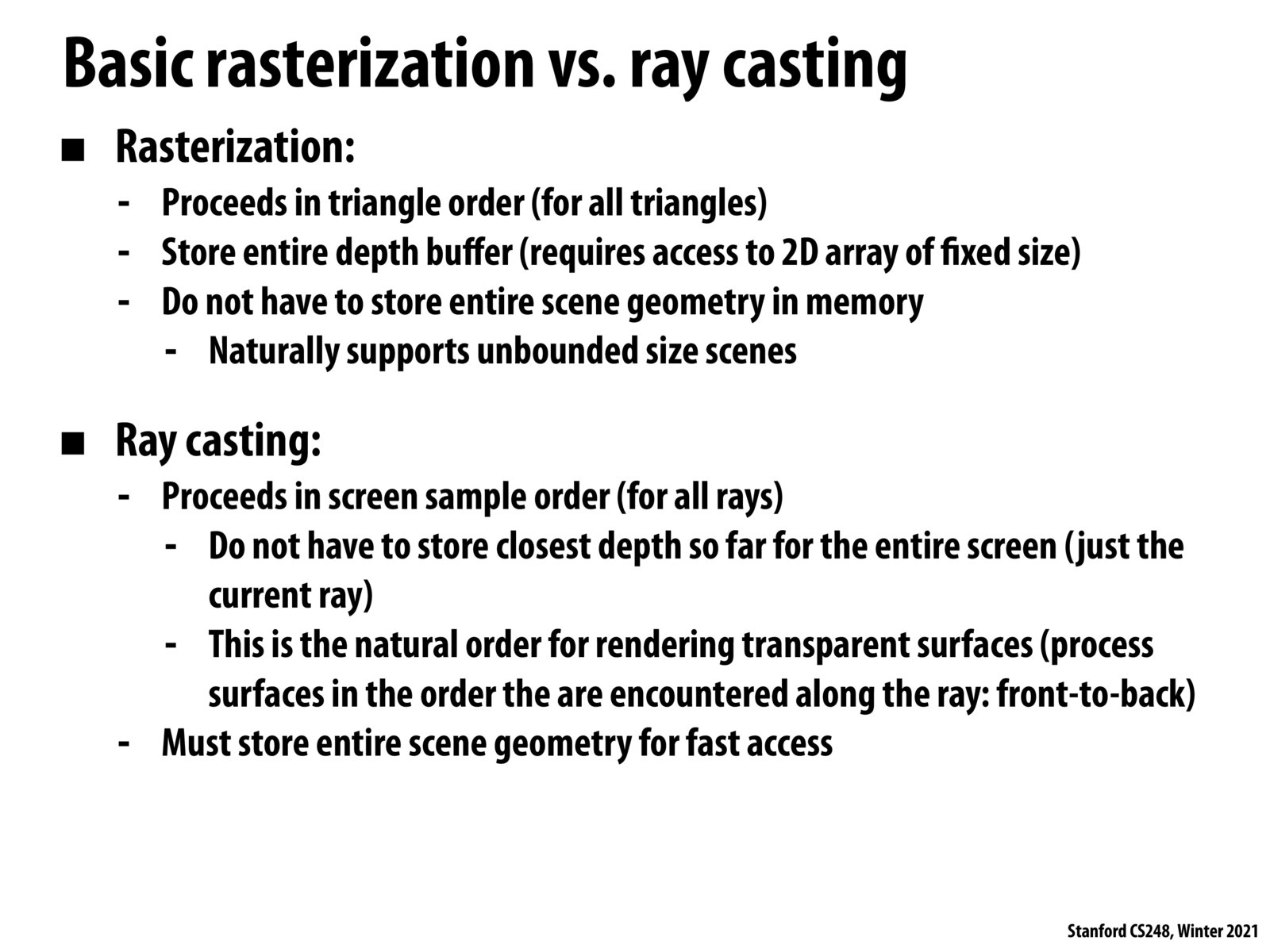


Ray casting has been used to generate extremely realistic images -- are we able to approach that degree of realism with rasterization alone?

^Modern rasterized video games look pretty good! But it seem like there's still a pretty big gap because rendering more complex surface properties (transparency, specularity etc) is so much more natural with ray casting/tracing approaches

Here's a cool comparison video between traditional rasterization and ray tracing: https://www.youtube.com/watch?v=45pfvYX-fxU

Why does rasterization naturally support unbounded size scenes?

I think the rasterization can handle unbounded size scenes because at any point in time you only need to perform computation for one component of the scene geometry. Additionally after that computation you won't need the information about that component of scene geometry again. As a result, you do not need to store it in memory.

It seems like a tall order to store entire scene geometry for ray-casting. How do you decide when to use ray-casting over rasterization and vice versa?

I wonder for these two methods, which one is used more in the real-world application?

What makes creating high storage and high throughput memory really challenging? Where in the memory design process is the bottleneck?

I think rasterization tends to be used more often, but this does appear to be changing from what I can tell @mrn.
Please log in to leave a comment.
Rasterization is enabled by projection of the 3D scene points to samples in a 2D frame buffer, whereas ray casting treats each sample as a ray pointing out into the 3D scene!